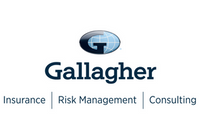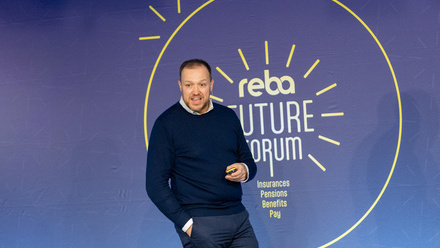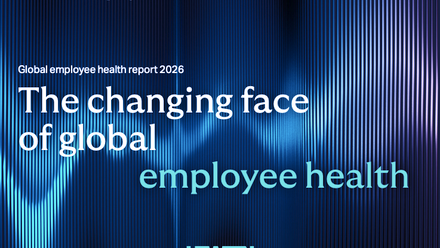Personalising benefits: Why employees need more than just a data dump
When it comes to employee benefits, many organisations fall into the trap of simply providing reams of information on an intranet, a benefits portal with some dropdown menus and occasionally an email reminder now and then.
More often than not, the benefits experience can be passive, transactional but entirely forgettable.
Nearly six out of ten (56%) in Gallagher’s latest UK Workforce Trends Report said their employees are "not engaged" with their existing benefits technology solutions.
It’s a shortfall that poses risks of reduced engagement, retention challenges and wasted resources.
Benefits should be one of the most powerful tools organisations have to bring their employee value proposition (EVP) to life.
They’re often undervalued, misunderstood, or poorly communicated.
The role of benefits in your EVP
Employee benefits sit at the heart of what a company needs from its people, what current and future employees expect in return.
When communicated effectively, benefits have the power to reinforce company values, express purpose, and provide meaningful support at the moments that matter most in an employee’s life.
Yet too often, employees only go looking for benefits when something goes wrong.
This can mean businesses are missing a major chance to reinforce their EVP, and employees are missing out on support they could really use.
The case for personalisation
Today’s employees expect personalisation, ease, and relevance because that’s what they experience in nearly every other aspect of their lives.
To bring an EVP to life, organisations need to offer a personalised benefits experience – one that takes into account each person’s life stage, preferences and priorities.
If a 30-year-old employee is looking at starting a family, the benefits experience should guide them through fertility, parental leave, childcare subsidies and flexible work options.
If someone is struggling with burnout or mental health, they should be guided to counselling, EAPs, or resilience training.
Data, technology and the employee journey
This is where data and technology come into their own.
Personalisation platforms can use employee demographics, activity patterns, or even survey responses to recommend benefits most likely to be relevant.
AI-driven benefits portals can offer smart navigation, guiding employees through complex life events with clarity and simplicity.
Push notifications or nudges can prompt employees to use benefits before a crisis hits – helping them be more proactive about their wellbeing, finances, or work-life balance.
Yet despite this potential, many organisations are still struggling to connect the dots.
According to Gallagher’s 2025 Employee Communications Report, while the use of AI in communications has sparked interest in hyper-personalisation – 48% of communicators cited it as a high priority over the next five years in last year’s report – few have laid the groundwork to make it a reality.
Satisfaction with personalised content based on HR data remains low at just 30%.
Meanwhile, nearly half of respondents are dissatisfied with their current channels’ ability to segment employees by demographic (45%), preference (53%), or user behaviour (56%).
Simplifying the complex
Benefits can be complicated.
They often come with eligibility criteria, overlapping policies, and unclear boundaries.
When employees need support the most they’re often least equipped to decode.
Personalisation is also about simplifying what’s on offer.
It’s about making sure that, when an employee is in need, they don’t have to be a benefits expert to find the right help.
A smart EVP strategy connects messaging to experience.
If an organisation claims to care deeply about mental health, it can’t just run a wellness week and call it a day.
It needs to show how that commitment plays out in the benefits package – through free therapy sessions, protected mental health days, or manager training on psychological safety, for example.
Aligning benefits with brand and purpose
If your brand is about innovation, are your benefits forward-thinking and tech-enabled?
If you pride yourself on inclusion, are your offerings inclusive of all family structures, gender identities, and life circumstances?
If you claim to support career growth, do you offer benefits that fund learning and development?
Connecting benefits to brand and purpose gives employers a competitive edge in the talent market.
In a world where prospective employees scrutinise Glassdoor reviews, Reddit threads, and TikTok posts, what you offer – and how you talk about it – matters.
Final thought: From information to experience
When benefits are personalised, well-communicated, and connected to the bigger picture of who you are as an organisation, they do more than support your people.
They amplify your People Story, strengthen engagement, trust, and loyalty. And they help you stand out as an employer who stands by what it says.
Supplied by REBA Associate Member, Gallagher
Gallagher is a global, integrated HR consulting, benefits administration & technology services provider.








